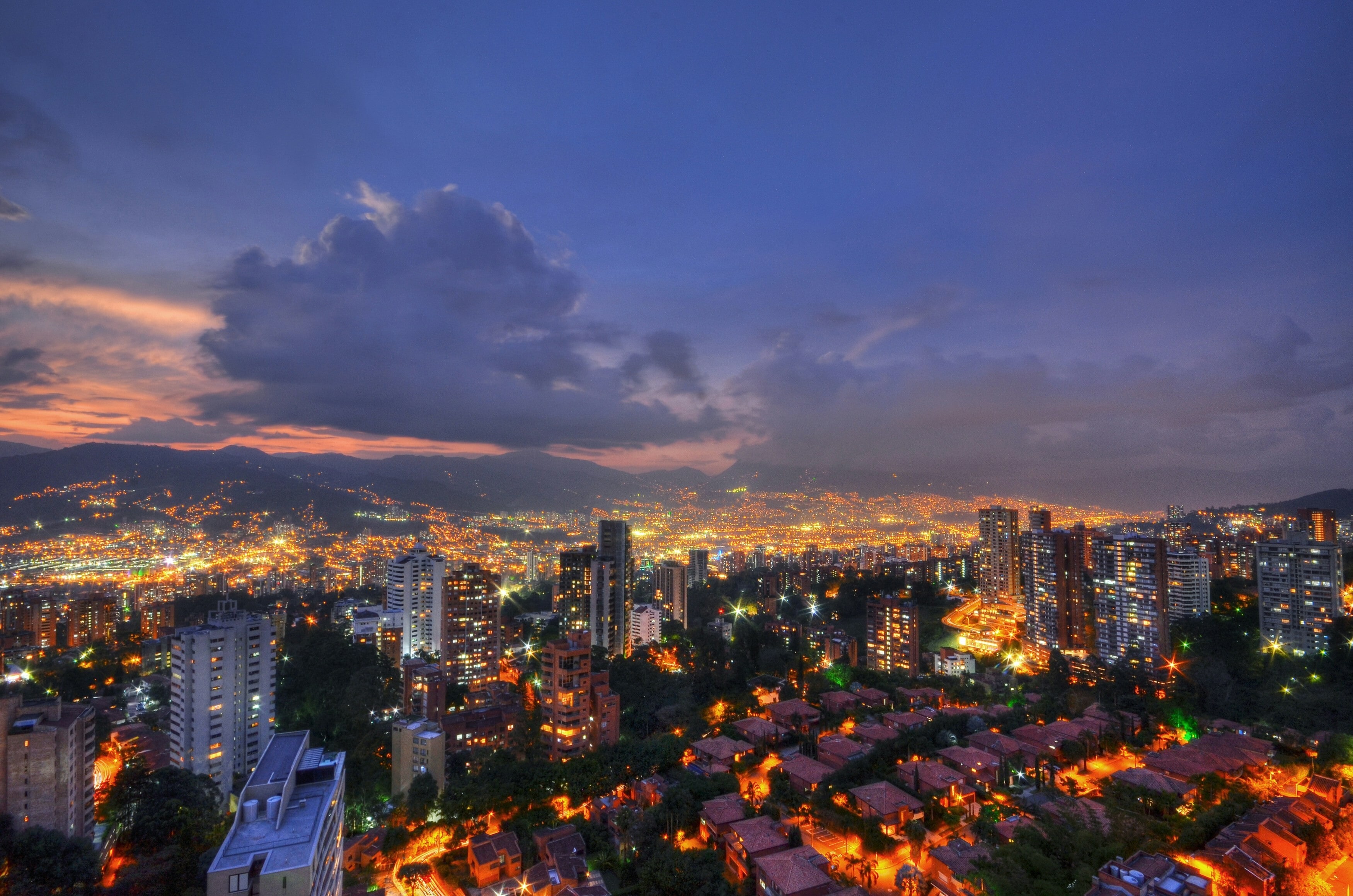Have cities made strides in providing clean and equitable environments?

Sustainable cities are the focus of Sustainable Development Goal 11.
Image: Getty Images/iStockphoto
Stay up to date:
Cities and Urbanization
- Cities are epicentres of human activity, yet harbour some of today's biggest issues, including inequality and environmental degradation.
- As the 10-year anniversary of the Sustainable Development Goals nears, cities need to evaluate how they have fared on SDG11, especially when it comes to urban development.
- Understanding progress and challenges can help cities learn how to best improve their climate and environmental performance in an equitable way.
Cities are epicentres of human innovation and activity, yet they harbour some of the most pressing issues of our time, including rising inequality and environmental degradation.
As we near the 10-year anniversary of the United Nations’ Sustainable Development Goals (SDGs), it is important to evaluate how cities have fared on SDG11: Sustainable cities and communities, which targets sustainable and inclusive urban development.
The latest Urban Environment and Social Inclusion Index (UESI), the only spatially explicit tool measuring cities' progress towards SDG11, explores the environmental performance and equity of nearly 300 cities across all inhabited continents. It reveals a mixed picture of successes and ongoing challenges.
Mixed success on sustainable cities targets
Top-performing cities have excelled in reducing greenhouse gas emissions, improving air quality and increasing public transit accessibility. However, lower-performing cities, particularly in parts of Asia and Latin America, continue to grapple with issues like air pollution, exposure to urban heat and insufficient green spaces.
Most importantly, for the first time, the UESI tracks progress over time and reveals that, despite global efforts to position cities as key sustainability leaders, progress has largely stalled.
What are the trends underpinning this stagnation and what can cities do to drive progress?
Here are five key findings:
1. Cities are not sharing environmental benefits and burdens equally
Nearly half of the cities analysed are unevenly distributing environmental benefits and hazards, exacerbating income inequality. Studies indicate that less wealthy communities face heightened risks from particle pollution.
These amplified health risks can hinder economic mobility in affected communities, as healthcare costs rise, productivity declines and life expectancy shortens. In 166 cities, lower-income populations face greater exposure to air pollution and urban heat, with limited access to tree cover and other amenities.
Conversely, 102 cities show a pattern where affluent populations are more exposed to environmental burdens. Notably, 43 cities, particularly in North America, show high-income inequality while also disproportionately burdening less-affluent communities with environmental hazards, further intensifying socioeconomic disparities.

2. Targeted policy and planning key to environmental success
The latest data show economic strength does not guarantee strong environmental performance. Some African cities, like Dodoma in Tanzania and Freetown in Sierra Leone, outpace their gross domestic product (GDP) expectations in environmental metrics, while rapidly growing cities with high GDP per capita, such as Singapore and Los Angeles, fall short due to factors like high greenhouse gas emissions and urban heat.
These findings challenge the assumption that wealthier cities are inherently more sustainable, pointing instead to the importance of well-designed policy and urban planning.

3. Progress in urban environmental performance has worsened or stayed stagnant
Progress in urban environmental performance, particularly in fine particulate pollution, urban heat and tree cover, have either worsened or remained stagnant, with little improvement in achieving an equitable distribution of their impacts.
While cities have made some notable progress in increasing public transit coverage and reducing nitrogen dioxide pollution, performance has declined on other critical issues, notably PM2.5 pollution.
Most cities continue to expose residents to unsafe PM2.5 levels, with low-income communities still bearing the highest exposures. Performance on tree cover has declined, which has also contributed to worsening urban heat island intensity for most cities.
Overall, equity trends show notable improvement in tree cover access and slight improvements in air pollution and urban heat intensity burdens. Public transit distance, however, has worsened for lower-income populations within cities that may require it the most.

4. Air pollution remains one of the most dangerous environmental threats to human health in cities
As the second leading cause of death globally after high blood pressure, air pollution is responsible for nearly 7 million deaths each year. Nearly all residents in UESI cities are exposed to PM2.5 levels above the World Health Organization’s (WHO) 2021 guideline of 5 µg/m³, with 91% facing at least moderate exposure (10 µg/m³, per the 2005 WHO guideline).
Exposure is particularly severe in regions of the Global South, where economic growth often relies on high-polluting processes and industries like coal power, manufacturing, mining and oil extraction. However, global air quality is gradually improving across 267 UESI cities, particularly in Europe and North America, where cities like London, New York and Montreal have reduced PM2.5 below 10 µg/m³ in recent years, marking significant progress in urban air quality.
Conversely, cities in East Asia, Latin America and sub-Saharan Africa, including Seoul, Beijing, Mexico City and Kinshasa, show stabilization or slight declines in PM2.5 levels. Finally, cities in the Middle East, North Africa and South Asia, such as Tehran and Bangalore, still face high PM2.5 levels.

5. Urban climate emissions extend beyond immediate boundaries
Indicators based on consumption reveal that many cities’ actual carbon impacts can exceed local boundaries, with emissions 5-10 times higher when accounting for imported goods and services. This result suggests that even leading cities in climate action may not fully address their total climate impact.
Only in a small group of cities in developing regions such as Africa, territorial emissions match or surpass consumption-based carbon footprints. This pattern is often due to high-emission sectors – like manufacturing, waste treatment and energy production – remaining within city boundaries, unlike in many developed cities where these sectors are relocated outside urban areas, contributing to consumption-based emissions instead.
These insights underscore the importance of accounting for consumption-based emissions to capture the complete climate footprint of urban areas. By doing so, cities can more accurately gauge the scale of their emissions, propose actions to address the full range of their emissions, assess the effectiveness of their climate policies and make more informed decisions in support of global climate action.

At the COP29 climate negotiations in Baku, Azerbaijan, cities will again prove crucial for climate action. Their significance is underscored by the latest UN assessment, which highlights the inadequate progress of national climate efforts.
This shortfall underscores the importance of international partnerships like the Coalition for High Ambition Multilevel Partnerships (CHAMP) for Climate Action, where 73 countries have committed to enhancing cooperation with subnational governments and maximizing climate action at all levels.
Following the recent election of president-elect Donald Trump and an anticipated second US withdrawal from the Paris Agreement, focus will shift back to subnational climate efforts, which in 2016 united nearly 4,000 leaders to make their own pledges to tackle climate change.
What is the World Economic Forum doing to ensure smart cities?
Understanding both progress and challenges can help cities identify synergies with regional and national governments, and learn from one another how to best improve their climate and environmental performance in an equitable way.
Angel Hsu, PhD, is an Associate Professor of Public Policy and Environment at UNC Chapel Hill, where she also directs the Data-Driven EnviroLab. Diego Manya is a Research Scientist at the Data-Driven EnviroLab and Co-lead of the Urban Environment and Social Inclusion Index.
Don't miss any update on this topic
Create a free account and access your personalized content collection with our latest publications and analyses.
License and Republishing
World Economic Forum articles may be republished in accordance with the Creative Commons Attribution-NonCommercial-NoDerivatives 4.0 International Public License, and in accordance with our Terms of Use.
The views expressed in this article are those of the author alone and not the World Economic Forum.
Related topics:
Forum Stories newsletter
Bringing you weekly curated insights and analysis on the global issues that matter.
More on Urban TransformationSee all
Charlotte Edmond and Rebecca Geldard
August 19, 2025
Luis Antonio Ramirez Garcia
August 11, 2025
Michael Fröbel and Stanislas Hillen
August 8, 2025
Jeff Merritt and Vivian Brady-Phillips
July 25, 2025



